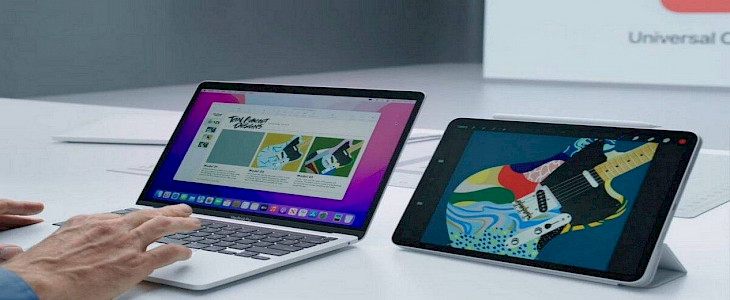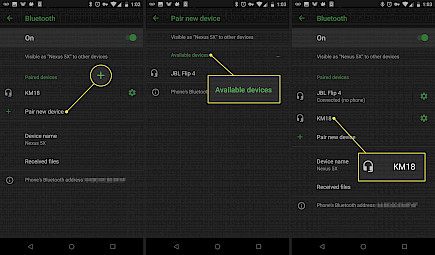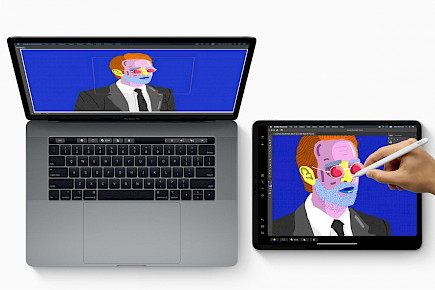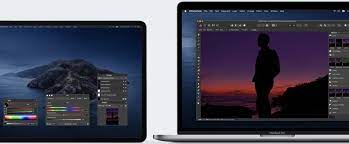
With iOS 15.4 as well as macOS Monterey 12.3 (currently in beta), Apple introduced the Universal Control feature to let you manage the operation of multiple Macs and iPads using one keyboard and trackpad.
In Universal Control, you can utilize your primary trackpad and keyboard on your Mac to control any other Macs or iPads in the vicinity, meaning that you don't have to have an office that is cluttered to accommodate more than one input device.
However, getting it to work may be a challenge, particularly the first time you attempt it.
This article provides answers to some of the most commonly encountered problems that arise when trying to get Universal Control to work.
Thus, without further ado.
Let us Begin…
Compatibility with both Mac and iPad
First, Universal Control requires iPadOS 15.4 on an iPad as well as macOS Monterey 12.3 on a Mac. The Universal Control is compatible with the following devices:
- MacBook Pro 2016 and later models
- MacBook (2016 to later)
- MacBook Air (from 2018 onwards)
- iMac (2017 as well as later)
- In late 2015, Apple released the iMac (5K Retina 27-inch)
- iMac Pro (2018 and later), Mac mini (2018 and later)
- 2019 Mac Pro
- Every iPad Pro model is available.
- The iPad Air (3rd generation and later)
- The iPad (6th generation and onwards)
- iPad mini (5th and older generations)
Make sure your devices logged into the same iCloud account

All devices have to be connected to one iCloud account to enable Universal Control to work across the devices.
Universal Control cannot work with devices with separate Apple ID accounts.
It is possible to ensure that your Mac is connected to iCloud by visiting System Preferences > Apple ID. On the iPad, start Settings and then tap the Apple ID banner at the top of the main menu.
Keep your devices close to each other

Universal Control is designed to be utilized by Macs and iPads nearby, often on the same table, to allow you to visually watch the cursor move from one display to an adjacent device.
To do this, Macs and iPads have to be at least 30 feet (10 meters) away from each other for Universal Control to work.
Make sure your device is Bluetooth and Wi-Fi Compatible

Because Universal Control uses Bluetooth and Wi-Fi to connect devices for seamless experiences, both wireless protocols must be turned on for both Macs and iPads.
Additionally, each device must have the ability to connect via Wi-Fi to each other.
Make sure Handoff is enabled

Universal Control requires Handoff to be enabled across all devices. For Mac, you can navigate to the System Preferences and then the General tab.
Then make sure that the box is marked at the bottom just below to allow Handoff for this Mac as well as your iCloud device.
On the iPad, you can open Settings > AirPlay and Handoff and turn on the switch adjacent to Handoff. In the same window, ensure that the switch is located in green, next to the keyboard and cursor (Beta).
Set up regulation for Cellular Data Sharing

To enable Universal Control to work, all Macs and iPads must share a cellular or internet connection.
Therefore, the Mac cannot be connected to the iPad via Wi-Fi, Bluetooth, or USB. Instead, you must disable any tethering by selecting the options found in Settings and then Personal Hotspot.
Are you utilizing Sidecar?

Sidecar, as well as Universal Control, are distinct functions. As a result, some users experienced difficulties integrating them in conjunction.
Suppose you're making use of Sidecar for mirroring or extending the display of your Mac onto an iPad. In that case, Universal Control won't work with the iPad.
In addition, it could not work on the second iPad connected to your Mac because there are some problems in the way these two functions work in the beta version.
You can turn off Sidecar by using the display panel on the control center to avoid any potential problems.
Are you running at least one Mac?

Although Universal Control can be used with more than one Mac and there are no iPads, at least one Mac is required to utilize Universal Control with iPads.
Also, two iPads without the use of a Mac are not able to benefit from Universal Control. Still, if at the very least one Mac is present, it is possible to utilize the feature on multiple iPads.
Winding-up
And just like that, you can set up universal Control for first-time use.
Hope you liked the article. We will be back soon with other fun hacks and tutorials, until then. Stay Tuned, Good Day!





